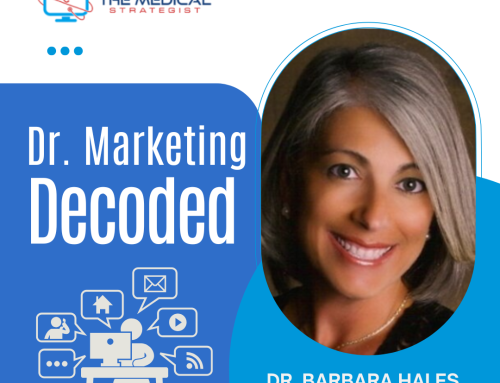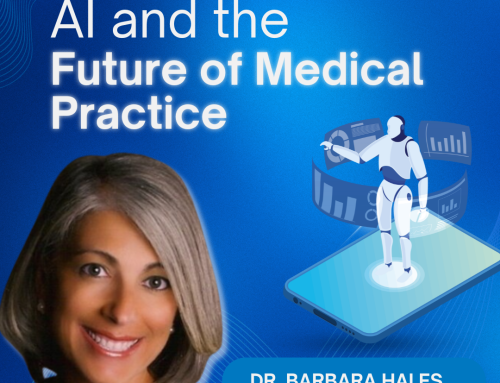Podcast: Play in new window | Download
Subscribe: RSS
In this episode, Barbara discusses:
- What are Advertorials?
- What is the process of creating an advertorial?
- Important Considerations When Creating an Advertorial
Key Takeaways:
“An advertorial is an ad that’s written to look and sound like an editorial. With any typical advertisement, you aim for the ad to jump off the page. But with an advertorial, you want the ad to blend in as if it’s just another article on the page of the newspaper or online. ” – Dr. Barbara Hale
Connect with Barbara Hales:
Twitter: @DrBarbaraHales
Facebook: facebook.com/theMedicalStrategist
Business Website: www.TheMedicalStrategist.com
Email: halesgangb@aol.com
YouTube: https://www.youtube.com/TheMedicalStrategist
LinkedIn: www.linkedin.com/in/barbarahales
Books:
Content Copy Made Easy
14 Tactics to Triple Sales
Power to the Patient: The Medical Strategist
TRANSCRIPTION (142)
Dr. Barbara Hales: Welcome to another episode of marketing tips for doctors. I’m your host, Dr. Barbara Hales, and today we’re going to discuss advertorials. A lot of doctors feel that while advertising may be advantageous, they don’t really want to place ads because, by and large, they feel that it’s either unethical or that it is just putting them in a bad light by advertising themselves.
Advertorials
Dr. Barbara Hales: However, there is a very professional way to advertise yourself where the average person taking a look at your output is not viewed as advertising while still accomplishing its goal, which is getting other people to know who you are, where you’re located, and the services or products that you provide. That is the advertorial. Many of you have seen them in newspapers, magazines, or online and not realized what they were. Editorials are the best way to describe a marketing tool. That is a piece of advertising, but it’s made to look like content. People read it because they think it is an article, not realizing that the person writing it has a vested interest. Compared to most advertisements, the advertorial needs a different tone. It has to be less promotional and newsier. Basically, an advertorial is an ad that’s written to look and sound like an editorial.
7-Step Process To Write Advertorials
With any typical advertisement, you aim for the ad to jump off the page. But with an advertorial, you want the ad to sort of blend in just a bit, just as if it’s just another article on the newspaper page or online. It can be difficult for many writers to switch from a promotional tone to a more newsy tone, which is why a seven-step process is listed for you to help you grasp the concept of writing an advertorial.
The first step is to start brainstorming the product or service to help you find ideas for your storyline. When you’re able to know a product inside and out, its features, benefits and modes of utilization, you’re better able to fit it into an everyday context.
Next, choose your everyday setting for your storyline. It’s best to use ideas and surroundings that your audience is familiar with. For example, if you’re selling a new cleaning detergent, you may want to set your story in either the kitchen or garage, in a home where the home’s residents would typically find themselves cleaning. Likewise, for a doctor’s office, you would want to have your storyline in a healthcare setting. People love reading stories. So having a story representing your services will attract many more readers.
Step three is to go ahead. Don’t hesitate to include action and dialogue in your story. People tend to remember things in different ways because of different learning styles. Because of this, the well-written and effective advertorial must be multi-dimensional and appeal to the visual as well as the auditory learner.
Then, ensure that your advertorial has a beginning, middle, and end, just as a story does, even though an average advertorial is slightly less than 800 words. That doesn’t mean there is no logical sequence of events that can’t be concluded. An easy way to remember this is that a complete story is easier to remember than an unfinished thought.
Step five, keep a 10-foot pole between you and discuss the price of the service, product, or other topics. The readers might consider it out of context or out of character for the particular publication. People aren’t going to read stories if they think that you’re just selling them a bill of goods. For instance, when writing an advertorial, don’t come up with a catchy jingle or right-over marketing buzzword. The idea of an advertorial is its editorial nature, meaning that contact information, such as a website, discreetly noted at the end of the story, has much more appeal than NBA talk.
Step six. Remember to include and explain complex product details within the storyline. Even though an advertorial entertains while it informs complicated products or services may require a lot more attention than others. Understanding the features, as well as seeing their benefits, is very important to a client or consumer
Lastly, take case studies and testimonials into consideration as support or documentation of the storyline. Remember that when an advertorial is written well, it will bring in a lot more eyes on the story and a lot more return on investment for you or your client, thus increasing the demand for your writing and your services.
Key Points In Creating Advertorials
A poorly written advertorial will fizzle and flop, and you will be forgotten as the effect of peace. People won’t read it. Let’s take a look at the moment at the key points of editorials. You want to keep your topic relevant. You’re using personal opinion and persuasive language and feeling free to use emotion but in a limited manner. On the other hand, advertorials, you have to know everything about your services and your products. Make sure your storyline is something that your audience can relate to or is familiar with. Include action and dialogue, have a beginning, a middle, and an end, and steer clear of unnecessary content. You don’t want readers just being bored and turning the page and moving on. Include and explain complex details. For medical or health-related services, this is something that is going to be necessary so that you are bringing complicated services down to a simple presentation that everyone can understand. Don’t forget to have the reason why you are making the editorial in the first place, which is to give your name, the address and telephone number of the place where services are being rendered, and contact information. Well, that’s another episode of marketing tips for Doctors where we talked about advertorials. If you would like to have one written for yourself but don’t want to take the time to do it. Please contact me. Dr. Barbara Hales and I would be happy to write it for you. Contact me at 5166473002, or www dot the medical strategist.com forward slash contact. Let’s get together and get those advertorials for you out in print. This has been another episode of marketing tips for Doctors with your host Dr Barbara Hales.



